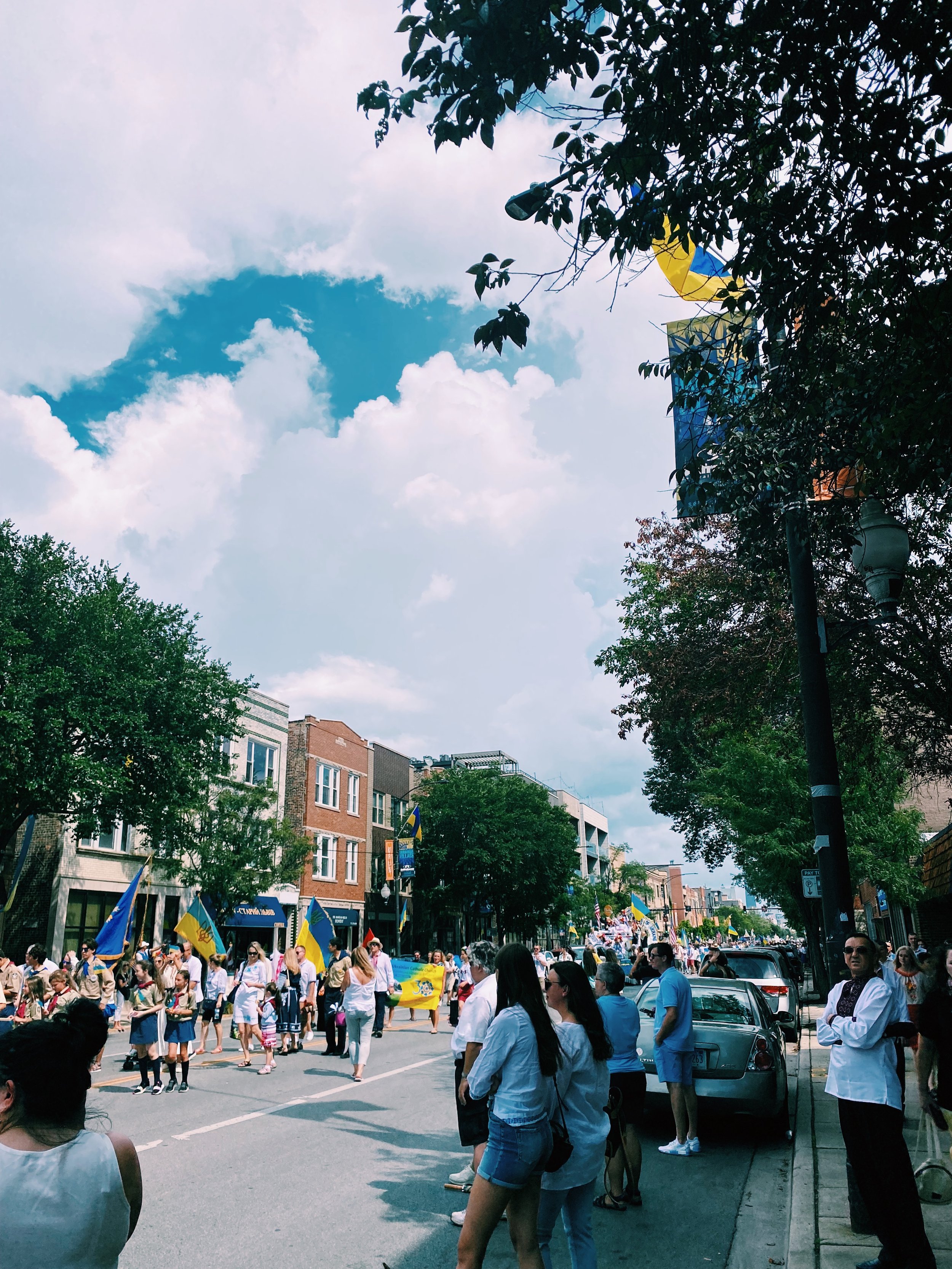this generous darkness (for Ash Wednesday)
Portland, Oregon
“Leslie was dead.”
I can still see the words on the page, and my stomach threatens to drop into my shoes upon remembering. I was ten years old, reading the novel Bridge to Terabithia by Katherine Paterson in my sister’s bed. I can’t recall why we had switched rooms, but I do know for certain I was wrapped in her blue quilt, shrouded under her tulle canopy. I was about halfway through the book, and in love, both with the main character Jess and his sad-boy-story-arch, and with the incredible make-believe world of castles and creatures the characters dreamed up. As a budding artist with a wild imagination, Terabithia was just as special, just as real to me as it was to the children in the story. In every sense of the word, it was magic.
Unfortunately, during this time of my life, I had developed a terrible habit of reading ahead. I couldn’t bear the tension of not knowing how things ended, couldn’t bear that sense of dread in my gut that whispered that tragedy was imminent, even though—especially—when things were trotting along swimmingly. I had to know what horror was to befall my friends. I flipped ahead a few (dozen) pages, and read the fateful line: “Leslie was dead.” The rope swing snapped in the rain, the author explained almost too matter-of-factly, and she had drowned the creek.
I wasn’t sure I could finish the book. I felt sick—like my stomach jerked up into my mouth and then plummeted. I knew that old people died eventually, but up until this point, I had no sense of it actually happening—not to girls who were ten, not to girls like me.
Ukrainian Village, Chicago, August 2021
Now, I want to acknowledge my incredible privilege in telling this story. I think of the people and communities in our aching world—especially with the Russian invasion of Ukraine—for whom death is a reality far before the age of ten, who live and learn to live inside of it. I can’t pretend to know what that feels like and what that requires of a child, and I won’t try to now. But I do know that on that day in the fifth grade, something changed inside me. It was like I had stumbled upon the precipice of a dark pit inside my own stomach, and I knew it wouldn’t go away.
Eight years later, and a freshmen in college, I stared into that icy darkness again, sitting on the brick sidewalk curb along the quad under a November sky. My mittened hand held the phone where my grandmother was breathing heavily on the other end, her cancer covering the whole lining of her stomach and all the adjacent organs. Her own dark pit. I don’t remember what I said on the phone that day. What do you say? All I remember is that she asked me about myself. She loved to listen to me ramble on about the mundane details I’ve always been a little too willing to share. I told her I loved her, and she told me she loved me, too. It was the last time we spoke, and I knew it as soon as I hung up. I sat alone, shaking, and wiping my eyes in the frigid wind. And then I got up, and went to dinner.
I’ve been thinking about these memories a lot lately—as we continue to hear about the violence and terror of war in Ukraine, as men and women and children are murdered because of their skin color by those who are sworn to protect them, as friends and their loved ones get horrible diagnoses, as storms and fires ravage the planet, as we approach the two-year anniversary of a virus that has torn through the world and taken so many people with it.
Mount Washington, Pittsburgh, Pennsylvania
If you’re reading this in real time, it’s Ash Wednesday today, historically a day that begins a 40-day period of fasting leading up to Easter. Typically, congregants are asked to “give up” something and put something else in its place with the heart of drawing closer to God. Ash Wednesday is ritualized by the drawing of a cross on one’s forehead in ashes as a reminder of our own mortality, with the spoken phrase: “from dust you were born and to dust you shall return.” It’s darkly mysterious and feels very sacred.
This year, more than any year prior, I am grappling with what it looks like for us to remember our mortality. What does it look like to remember and recount our own experiences of death? To remember our own death, in advance? And to interact with the Divine in this context?
I certainly am not setting out to solve the problem of evil and death in the world. That is a whole different story for another day. I don’t have any answers for you, but I want to sit with you in the questions. Questions of how to feel the pain of death and injustice without growing numb to it, or on the other hand, succumbing to the despair entirely. Questions of how we can love each other better in a world where such death is a reality, both physical death and the constant death of dreams, expectations, friendships, and our own small worlds that undergo irreversible changes daily. I want to mine our hearts on the shore of the dark lake of grief in our bodies and ask what it would look like for us to sit hand in hand, refusing to give up or give in. To love each other in the truest sense of the word.
I am asking questions with the psalmist of Psalm 11: “if the foundations are destroyed, what can the righteous do?” (11:3)
I am wondering with Anne Lamott in her book, Bird by Bird: “…maybe we have gone beyond fixing. Maybe all we can do (is) make our remaining time here full of gentleness and good humor…the issue now is how to take care of one another” (101).
Portland Art Museum
Maybe that’s what this life is about. Learning together how to let the dark and the light coexist, and how to walk through this night as each other’s presence becomes the light that forms constellations in this great lonely darkness. “(This is) the miracle, and it’s astonishing,” Lamott writes. “This shaft of light, sometimes only a glimmer, both defines and thwarts the darkness.” (99)
This Lent, I want to look for these places where the light of community is slipping in through the blinds of my heart. I want to learn to open up to the soft humming of the moonlight. I want to let myself cry with my friends whose hearts are breaking, and let myself cry when my own heart breaks. I want to sit with my great-grandmother as her fierce and wild spirit tries to outlive her decaying body. I want to watch the bud on the maple tree burst open in a bright red celebration.
the first bud
Somehow, in this strange and wonderful thing we call being alive, the generous darkness always makes room for the light. Those lights, like “practicing kindness, keeping one’s heart open in the presence of suffering,” (101), being vulnerable enough to tell our own stories, and brave enough to listen to the stories of others help us to walk through the rubble of the destroyed foundations of our country, our church, and our world at large. This Lent may we learn to notice the death, mourn it, and love through it. Maybe these small lights are part of what will heal us after all.
Friends, this is a great mystery to hold. A mystery of participating in the creation of a beautiful world that we get to imagine and meaningfully live into now, while at the same time pressing through the day-to-day reality that death persists. This is a tension that no amount of reading ahead will alleviate. Jumping to the end doesn’t provide us with any answers, except to remind us of the mercy for our hearts humming in the darkness. It reminds us that we are accompanied, even if simply by the constellations only visible at night. That the hope is in the mystery, and that, if we allow it to be, the mystery is a gift.
Always grateful to be on the way and in the middle with you, and especially today.
—Alyssa
p.s. some art I’ve been engaging with and consequently loving, on or related to this topic:
This piece (above) at the Portland Art Museum
Ellie Holcomb—Constellations
Anne Lamott—Bird by Bird
Christa Wells—One Day
Thanks for reading!
If this is your first time here, welcome! I’m so glad you’ve wandered in. Use the tabs at the top to explore, read, all that fun stuff. If you liked what you read, feel free to do any combination of these three things (or none at all! the writing is for you!):
Contact me to share your thoughts, if you have questions, comments, want to get coffee, etc. I’d love to hear from you, truly.
Subscribe to my newsletter to receive an email when I post something new, and to receive exclusive content!
Share this post with others you think might like to read it on whatever social media makes you the happiest! Or, if you’re like me and no social media really makes you happy, just tell your friends!








